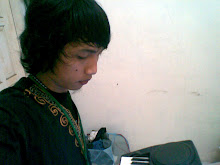Traditional Batik historically derived from Indonesian ancestors, known since 17th century, first recorded batik was written and painted on palm leaves with main pattern and picture were dominated with the form of animals and plants. But in its development the painting patterns from animals and plants gradually turn to the more abstract patterns, that resembles clouds, temple engraving, or other javanese traditional art such as wayang beber. Furthermore, it continues to evolve to the batik as we know it today.
Derived from the Javanese Batik 'Amba' which means writing and 'titik' which means dots. The word 'amba' refers to fabrics with batik patterns generated by the wax materials are applied to the fabric, and dotting is the dominant painting technique in batik designs.
In the old Javanese kingdom, batik is identical with woman beauty and was used in measuring the beauty of the princess with her versatility in making batik using canting.
Canthing is one tool to write on batik cloth using wax. Until the discovery of 'batik stamping' style which allows the entry of men into the batik production, technically batik canthing only for kingdom princess.
In the beginning Batik only restricted for palace family and only wore for royal families. Because many of the royal servants lived outside the palace, the art of batik was brought out from the palace starting as an exclusive art of painting for rich family, and thus begins to spread to commoner which uses their own homespun fabric, and begins to be a hobby in the young Indonesian woman.
In the old tradition, batik painter should not be carelessly poured his inspiration on the fabric. Before batik painter handwritten the pattern to the paper, first the painter should do a little rituals like fasting and reading mantra, a special Hindu praying to worship God. And after batik sheet finished, the painter should do a closing ritual.
Yet the history of batik in fact contain a very high art value to Indonesian. Parang Rusak batik for example, actually was a sacred batik patterns used only in the palace environment. Similarly, the color and pattern of batik Parang Rusak may determine the origin of the palace the wearer, whether from the Palace of Solo or Palace of Jogja.
Derived from the Javanese Batik 'Amba' which means writing and 'titik' which means dots. The word 'amba' refers to fabrics with batik patterns generated by the wax materials are applied to the fabric, and dotting is the dominant painting technique in batik designs.
In the old Javanese kingdom, batik is identical with woman beauty and was used in measuring the beauty of the princess with her versatility in making batik using canting.
Canthing is one tool to write on batik cloth using wax. Until the discovery of 'batik stamping' style which allows the entry of men into the batik production, technically batik canthing only for kingdom princess.
In the beginning Batik only restricted for palace family and only wore for royal families. Because many of the royal servants lived outside the palace, the art of batik was brought out from the palace starting as an exclusive art of painting for rich family, and thus begins to spread to commoner which uses their own homespun fabric, and begins to be a hobby in the young Indonesian woman.
In the old tradition, batik painter should not be carelessly poured his inspiration on the fabric. Before batik painter handwritten the pattern to the paper, first the painter should do a little rituals like fasting and reading mantra, a special Hindu praying to worship God. And after batik sheet finished, the painter should do a closing ritual.
Yet the history of batik in fact contain a very high art value to Indonesian. Parang Rusak batik for example, actually was a sacred batik patterns used only in the palace environment. Similarly, the color and pattern of batik Parang Rusak may determine the origin of the palace the wearer, whether from the Palace of Solo or Palace of Jogja.




0 komentar:
Posting Komentar